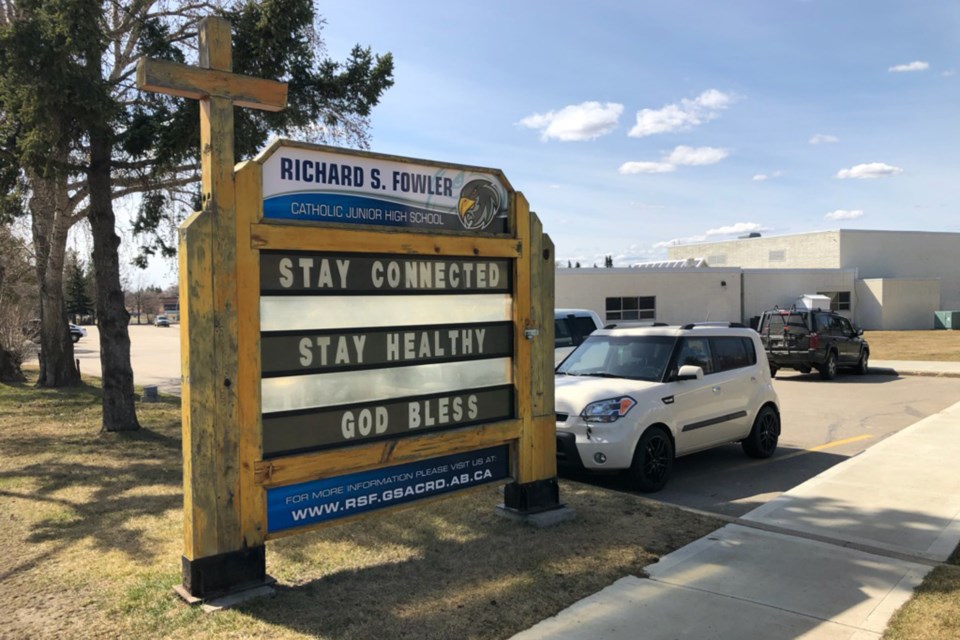As thousands of students have spent the last several weeks adjusting to going to math class at the kitchen table, the junior high students from Richard S. Fowler feel like they already had a leg up, all thanks to the Power Up 2 Learn program.
Years ago, the Catholic school started its Power Up 2 Learn initiative by encouraging students to spend more time on their computers. Getting students to turn technology on as a tool for learning is nothing new in the larger world of education but it sure has become key since COVID-19.
“We're in this interesting scenario now. We do have probably about 90 per cent of our students who actually bring their own devices to school and then we have access to devices for those who don't have access,” explained Danielle Karaki, principal at Fowler.
Class sets of Google Chromebook laptops were made available for student use.
“Over the last several years, we've been integrating new technology into our learning. The online platform was very familiar to our staff so it has been a pretty smooth transition for us actually.”
In addition to SMARTBoards in every classroom, the school’s own wireless network was upgraded and a video conferencing suite was installed at the school, fulfilling the requirements for the program to work. The majority of the school’s approximately 370 students have home internet access as well, while those who don’t are accommodated with alternative programming, Karaki said.
For the most part, Google’s applications have opened up all the doors and windows for learning. Google Meet is how teachers are now providing all of their curricula: through livestreamed video instruction. There has still been a learning curve for the educational staff to make lessons available at the push of a button.
“The Google platform and the online world was familiar to our teachers, but they still really had to adapt and be flexible. That face-to-face instruction in class wasn't online. They’re working hard just to add the instructor component to the online platform ... to connect to students and make sure that, again, they just have access to the resources that they need to continue their learning at home.”
Apart from that, one of the biggest challenges, she continued, has been to support the students who haven’t yet figured out their regular class schedule at home. For that, Fowler teachers are still making lots of phone calls.
This is as much to help the students as it has been to give the parents the assistance that they need as well.
“It's all about relationship with families. We have been chatting lots with families, just in terms of how we can support them and just help the students get online and complete their work. I think lots of families are feeling overwhelmed with the whole situation, especially families who have frontline workers or who have so much more than the school on their plate,” she continued.
“We have to just keep in mind that there are so many different factors that are influencing families right now. We have to really just be compassionate and remember what people are dealing with so that we can be supportive and just work closely together. It's just a matter of connecting with them and making sure that they still feel a part of the community, even if they can't come to school everyday.”



